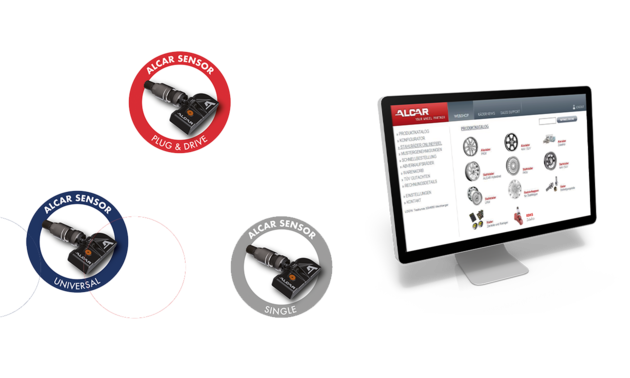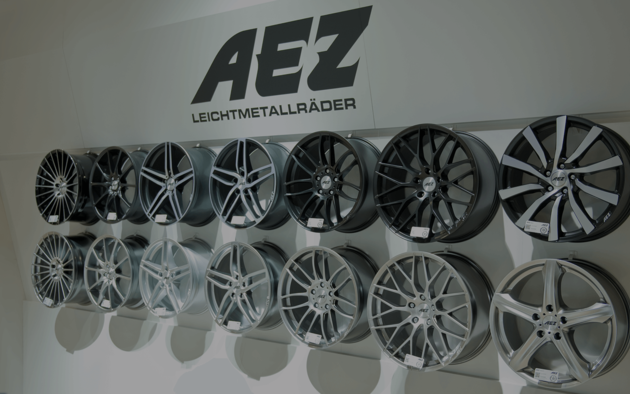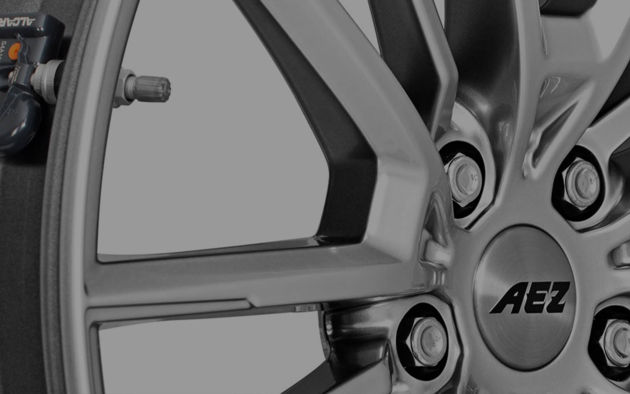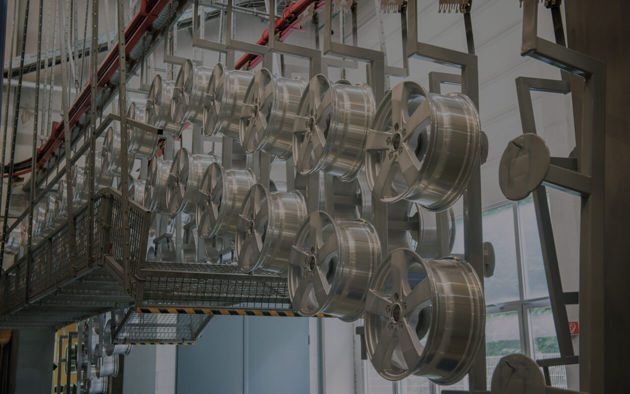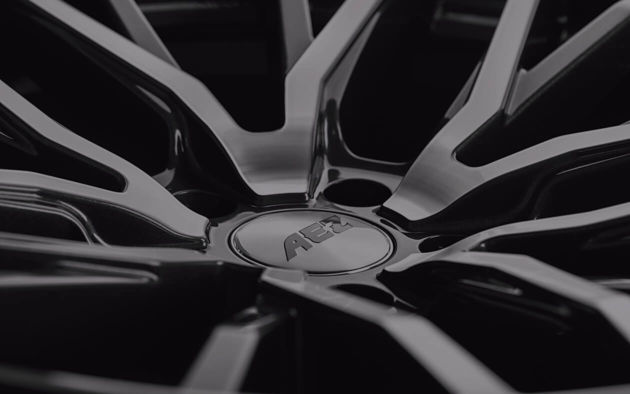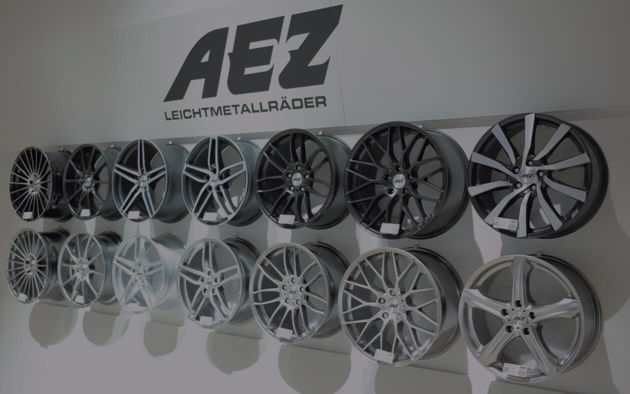TPMS
TYRE PRESSURE MONITORING SYSTEMS TPMS products in original quality for your AEZ rims.
Since the end of 2014, tire pressure monitoring systems have been legally mandatory in every new car and are therefore nothing new. What is brand new, however, is that ALCAR, the parent company of AEZ Leichtmetallräder, is offering a new and greatly improved generation of sensors for the passenger car aftermarket.
Read here what the four letters TPMS are about in detail and what extensive TPMS support you can expect as an ALCAR business partner.
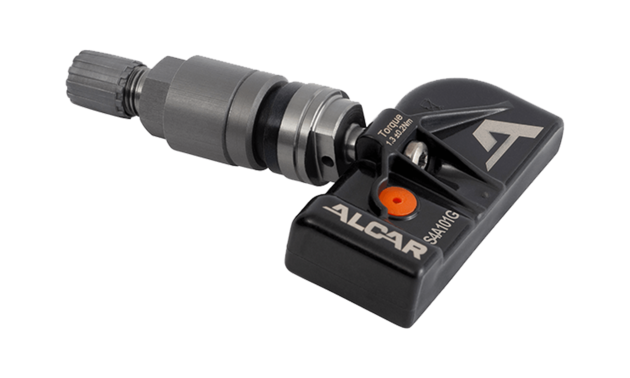
TPMS LEGAL REQIREMENTS
Which legal requirements must TPMS fulfill?
Since 1st November 2014: according to the EU Directive, all new cars must be equipped with a TPMS by the vehicle manufacturers. However, the EU Directive does not stipulate which tyre pressure monitoring system should be used. Permitted are direct as well as indirect systems as long as they fulfil the requirements and conditions of ECE-R 64. ECE-R64 only stipulates the functionality but not whether an original or aftermarket sensor is required.
Important: In accordance with EU Directive 2014/45/EU, which came into force on 20 May 2018, an obviously non-functional tire pressure monitoring system (RDKS/TPMS) is classified as a significant defect during the general inspection.
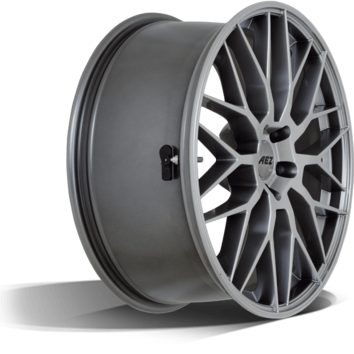
TPMS Basics What is TPMS?
Tyre Pressure Monitoring Systems (TPMS) are vehicle-integrated systems which continuously monitor the tyre pressure. There are two different system types; the direct system (measuring the tyre pressure via a sensor in the wheel) and the indirect system (measuring via the vehicle’s ABS sensor). A display inside the vehicle informs the driver if one or more tyres lose pressure.
TPMS fulfill 3 functions:
Increased driving safety
Avoiding higher fuel consumption caused by wrong tyre pressure
Avoiding high tyre wear which is caused by reduced tyre pressure
TPMS & PURCHASING WHEELS What should I look for when purchasing wheels?
If your vehicle is already equipped with a TPMS then you need to establish whether it is a direct or indirect system. In case that your vehicle is equipped with an indirect TPMS then you can purchase your wheels as per usual as this will not affect your TPMS.
If your TPMS is a direct system then you should look for the following when purchasing wheels:
- Does the wheel design of your choice fulfil all requirements for fitting a TPMS sensor?
- Due to the complex technology of the TPMS, we recommend to use a specialist dealer. They have the relevant special tools and programming equipment for changing tyres, maintenance work and for any other problems (e.g. warning on the display)!
TPMS EXPERT KNOW-HOW Technical details of TPMS on maintenance and service
A direct system measures the tyre pressure via a sensor integrated in the wheel. This information is wirelessly transferred to a control device in the vehicle. Various displays of individual vehicle manufacturers enable the driver to read the current pressure values permanently or to receive just a warning when the tyre pressure is too low. Such systems are very precise since they directly monitor the pressure for each wheel.
In an indirect TPM-System, the vehicle integrated ABS resp. traction sensors monitor individual wheel rotational speeds. Differences would occur if a pressure drop in the tires appears. In addition, pressure-dependent oscillations of the wheels are measured through advanced signal processing. A change will be considered a further indication of a loss of pressure.
A direct TPM-System allows for a very precise data collection and has additional functions like tyre position recognition, pressure loss detection when the vehicle is stationary and monitoring the tyre pressure of the spare wheel. A direct TPMS requires a significant extra effort and expenditure when changing tyres and during maintenance work. All tyres (summer, winter, spare) of a vehicle must be equipped with a properly working sensor.
An indirect TPMS is not as precise in its functionality since it neither measures the tyre pressure nor the tyre temperature. Also, it does not detect loss of pressure on the tyres when the vehicle is stationary.
The use of TPMS when driving and maintaining a vehicle poses new challenges for the driver and workshops alike:
The vehicle owner will not be able to simply change a tyre by himself but will need the help of a specially qualified dealer in order to fit, calibrate and check the sensor of wheels with a direct TPMS. Due to the EU-wide introduction of this technology, specialist dealers will train their staff and invest in the required equipment.
Tyre mounting is a safety-relevant issue and requires expertise (check of a condition of the tire, use the correct tightening torque, ...). Therefore, we recommend this principle to only be carried out by a specialist dealer.
Direct TPM-Systems also bring the following new technical requirements:
- The need for maintenance of the valve and the gaskets with every wheel removal to prevent wear of the sensor
- For new tyres: new configuration of the sensors to the vehicle when new sensors (new sensor ID) are used or amending the wheel position of the sensors in order to ensure the clear communication between sensor and TPMS receiver
- The battery level of the sensors must be checked when changing tyres
Vehicles which are subject to the compulsory fitting of a TPMS will already be equipped with a direct or indirect TPMS by the vehicle manufacturer as otherwise the vehicle will not be given a type approval and/or certification in any of the EU member states.
A subsequent installation of a TPMS is not mandatory.
ALCAR TPMS industry solution AEZ & ALCAR. THE TPMS SOLUTION FOR THE FUTURE.
The AEZ parent company ALCAR offers a tailor-made industry solution for specialist dealers: In addition to the sensors, the installation tools, diagnostic and programming device, service and spare parts kits as well as comprehensive advice are also provided for all customers and partners. In addition, ALCAR offers its customers optimal digital TPMS support in its web shop with the new TPMS Configurator. Sensor or service kit assignments etc. are also available in the Members Area as downloads and for quick printing. This enables ALCAR to solve the most common problems, for example which sensor belongs to which vehicle and what is the respective teach-in behaviour, quickly and easily online.
The “3 new ones” from ALCAR – TÜV-certified!
